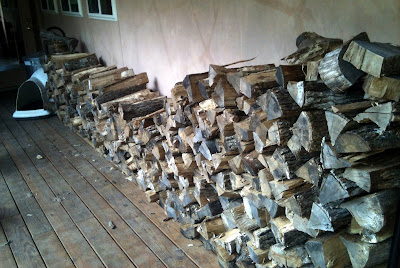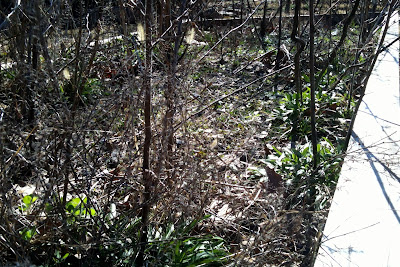This year's festival is being held in Fayetteville on March 2nd and 3rd. It will include gardening classes, films, and a seed swap. Be there or be square.
http://diginfestival.com/
Excerpted from the website:
"Friday, March 2, 2012
5:30-6:30 p.m. Opening Reception & Supporter Appreciation
Reception details & site TBA. Ticketed Event
Ticket Booth Open
7p.m.
Festival Welcome & Film: Truck Farm (50 min)
8p.m.
Film: Food Fight (72 min)
~~~~~~~~~~~~~~~~~~~~~~~~~~~~~~~~~~~~~~~~~~~~~~~~~~~~~~~~~~~~~~~~~~
Saturday, March 3, 2012
9 a.m.
Coffee & Treats: Free Info-Fair Opens
Tastings and Treats may be sampled as they are added throughout the day.
9:30 a.m. Festival Welcome & Panel Discussion:
Hunger in the Land of Plenty: Cultivating a Sustainable Food System
(Sponsored by Feed Fayetteville) The panel discussion is free, and all are welcome.
The family-friendly film What’s on Your Plate (76 min) will show concurrently as an alternative activity. (Film repeats at 2:30 p.m.)
11:00 a.m. Concurrent Events:
Class: Growing Nutrient Dense Produce with Calvin Bey
Class: Good Bugs/Bad Bugs with Amber Tripodi & Sam Kim
Class: Growing & Using Herbs Karyn Zaremba (time is tentative)
Film: King Corn (91 min)
Film: Urban Roots (93 min) (repeats in p.m.)
Kid’s Area: Drawing Tables
Info Fair Continues
1:00 pm Concurrent Events:
Class: Beginner Gardening & Composting with Jane Maginot & Dana Smith
Class: Backyard Chickens with Mariah & Ira White
Class: Cooking in Season with Chef Tuesday Eastlack
Film: Local Farm Tours on Film (50 min total)
Film: Seed Swap Ozarks (72 minutes)
Kid’s Area: Drawing Tables
Info Fair Continues
2:00-5pm FCGC Free Seed Swap!
2:30 p.m. Concurrent Events:
Class: Beginner Backyard Beekeeping (teacher TBD)
Class: No-Till Farming: how to create a perfectly natural and nutrient-rich soil to grow your plants with Patrice Gros
Class: Cooking in Season with Chef David Lewis
Film: What’s on Your Plate (great for families- 76 min)
Film: Food Fight (72 min) (shows on Friday p.m. also)
Kid’s Area: Drawing Tables
Info Fair Continues
4 p.m. Concurrent Events:
Class: Seed Saving with Herb Culver
Class: Creating an Edible Landscape with Leigh Wilkerson
Class: Basic Food Preservation Ideas (time is tentative) with Lucy Kagan
Film: Economics of Happiness
Film: Queen of the Sun (82 min) (repeats in p.m.)
Info Fair Continues
5:30 p.m. Concurrent Events:
Film: Food Fight (72 min) (also plays Friday evening)
Films-Double Feature: Truck Farm (50 min) & Greenhorns (50 min)
Info Fair Continues
7:30 p.m. Concurrent Events:
Film: Queen of the Sun (82 min)(also plays at 4 p.m.)
Films: Urban Roots (93 min) (also plays at 11 a.m.)
Info Fair draws to a close…
9 p.m. Festival Concludes
Dig In! is Friday, March 2 & Saturday March 3, 2012. Please note this schedule is a tentative DRAFT! Times & some events could change. Stay tuned to www.diginfestival.com for updates. Location: Global Campus Center on NE corner of Fayetteville Square (unless otherwise noted)
Individual event tickets available at the door. Suggested donation for each class/film you attend is $5 (more if you can/less if you can’t). We are operating on donations and all funds go into the festival. Weekend Supporter Passes start at $30 via website and at the door. Please consider being a supporter! We want everyone to be able to attend— and also hope for enough financial support to pay for the festival and do this again next year. Seed Swap, Panel Discussion & Info-Fair are free!"
















































